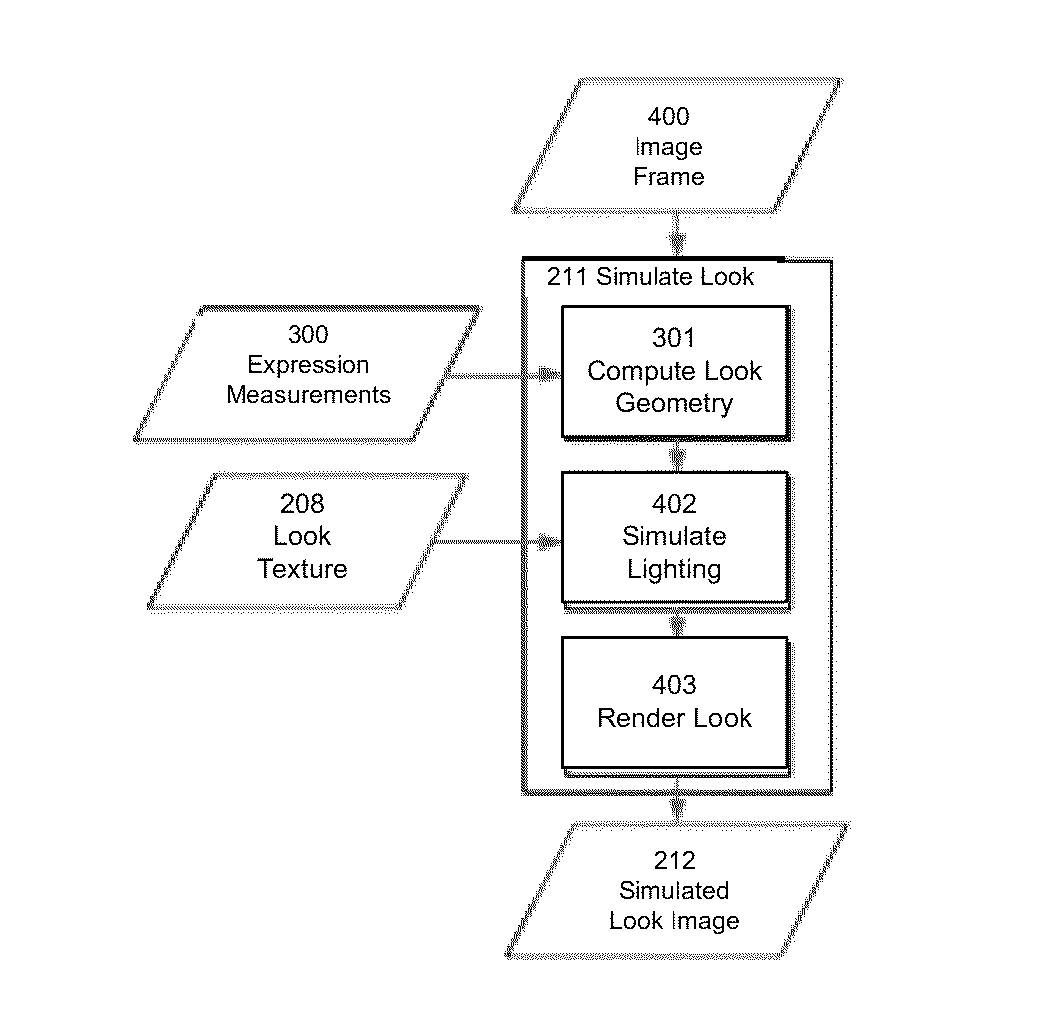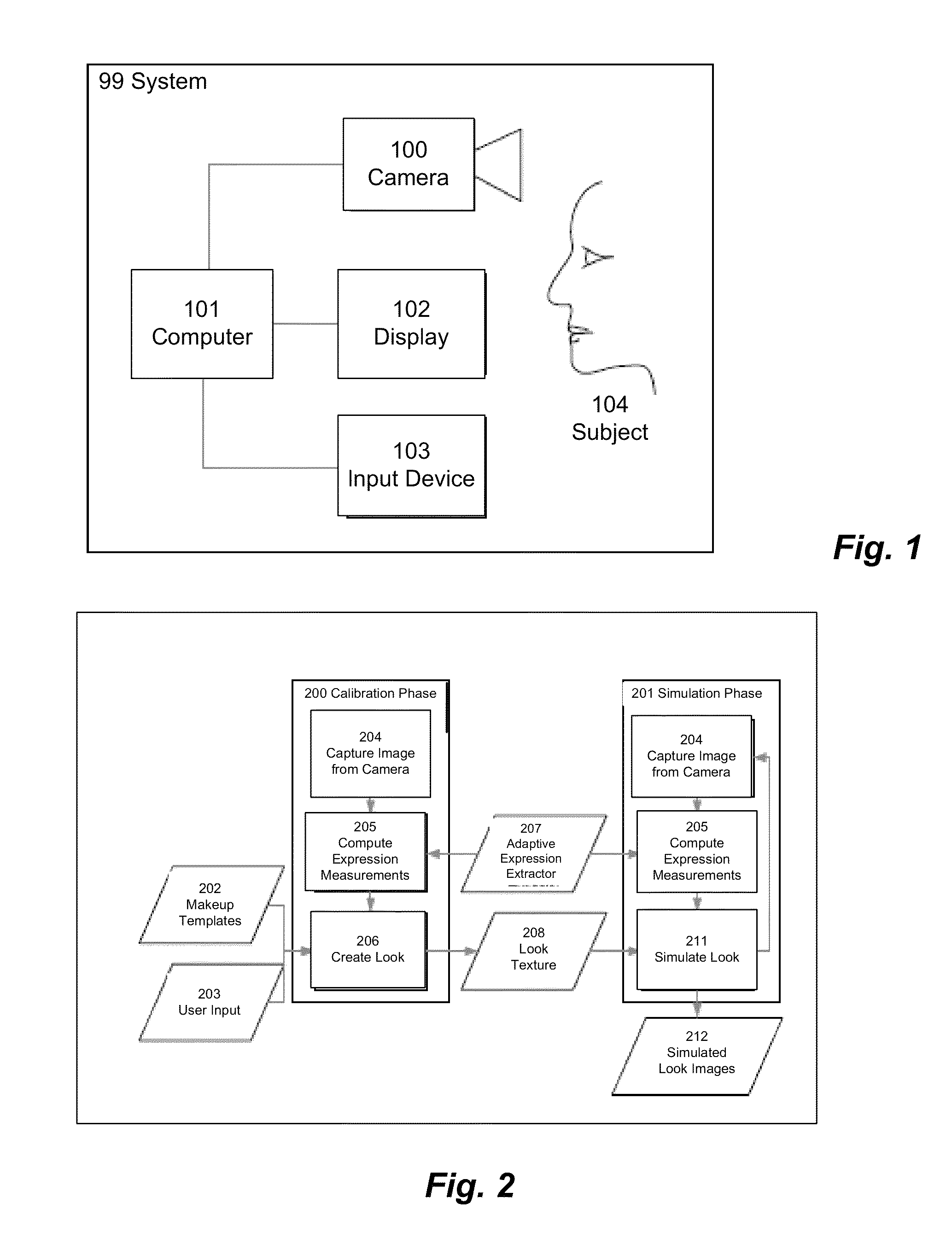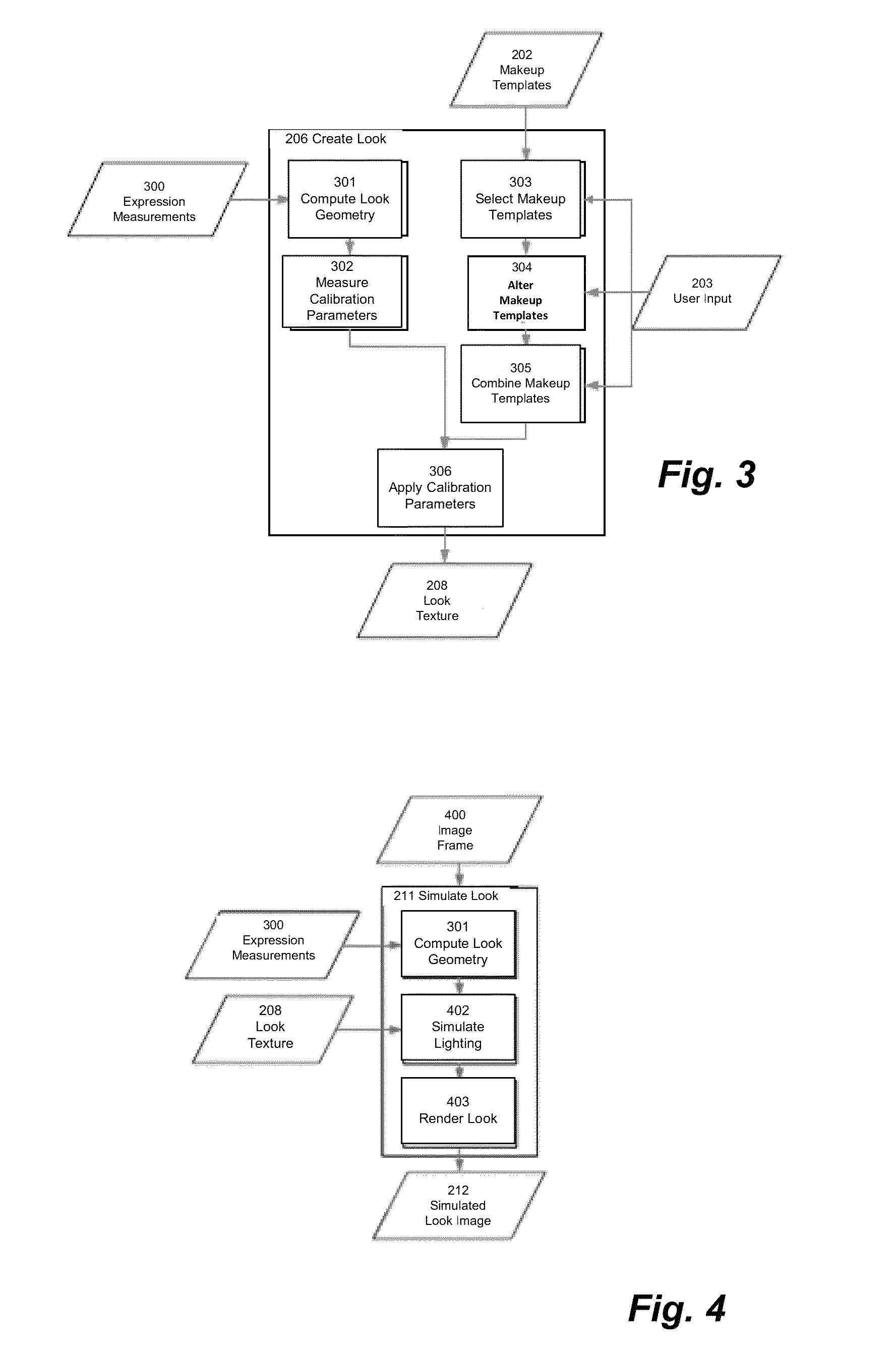Adaptive, calibrated simulation of cosmetic products on consumer devices
a technology of cosmetic products and simulation systems, applied in the field of automatic synthesis of the appearance of makeup and cosmetic products, can solve the problems of reducing the potential of any makeup simulation system, increasing effort and cost, and affecting the appearance of the face by applying makeup
- Summary
- Abstract
- Description
- Claims
- Application Information
AI Technical Summary
Benefits of technology
Problems solved by technology
Method used
Image
Examples
Embodiment Construction
[0011]In the present invention, systems and methods are provided for real-time simulation of the application of cosmetic products to a portion of a user's body, such as the face or hand, in an unconstrained image-capture environment and on a commercially available consumer device. One such method has a first step of capturing a real-time image of the users body in an unconstrained image-capture environment. From the real-time image, image-capture environment parameters, user visual characteristics and a correspondence between cosmetic product and the user's body are derived. A composite image of the portion of the users body with the desired cosmetic products applied based on the correspondence is produced. The extracted image-capture environment parameters and user visual characteristics are used to ensure that the virtual cosmetics appearance in the composite image matches the image-capture environment and user's skin tone.
[0012]A desired makeup look may include one or more cosmet...
PUM
 Login to View More
Login to View More Abstract
Description
Claims
Application Information
 Login to View More
Login to View More - R&D
- Intellectual Property
- Life Sciences
- Materials
- Tech Scout
- Unparalleled Data Quality
- Higher Quality Content
- 60% Fewer Hallucinations
Browse by: Latest US Patents, China's latest patents, Technical Efficacy Thesaurus, Application Domain, Technology Topic, Popular Technical Reports.
© 2025 PatSnap. All rights reserved.Legal|Privacy policy|Modern Slavery Act Transparency Statement|Sitemap|About US| Contact US: help@patsnap.com



